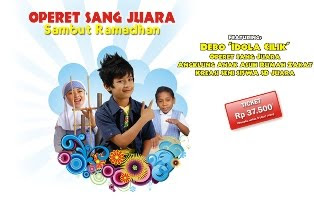My Indonesia
Indonesia, the largest archipelago and the fifth most populous nation in the world, has a total of 17,508 islands, of which about 6,000 are inhabited. Indonesia extends 3,198 miles (5,150km) between the Australian and Asian continental mainland and divides the Pacific and Indian Oceans at the Equator. With a total land area of 767,777 square miles (1,919,443 sq. km), its 190 million inhabitants are made up of 300 ethnic groups who speak an estimated 583 different languages and dialects. There are five main islands in Indonesia. These are: Java, Sumatra, Kalimantan, Sulawesi and Irian Jaya.
Across its many islands, Indonesia consists of distinct ethnic, linguistic, and religious groups. The Javanese are the largest and most politically dominant ethnic group. Indonesia has developed a shared identity defined by a national language, ethnic diversity, religious pluralism within a majority Muslim population, and a history of colonialism and rebellion against it. Indonesia's national motto, "Bhinneka Tunggal Ika" ("Unity in Diversity" literally, "many, yet one"), articulates the diversity that shapes the country. However, sectarian tensions and separatism have led to violent confrontations that have undermined political and economic stability. Despite its large population and densely populated regions, Indonesia has vast areas of wilderness that support the world's second highest level of biodiversity. The country is richly endowed with natural resources, yet poverty is a defining feature of contemporary Indonesia.
Across its many islands, Indonesia consists of distinct ethnic, linguistic, and religious groups. The Javanese are the largest and most politically dominant ethnic group. Indonesia has developed a shared identity defined by a national language, ethnic diversity, religious pluralism within a majority Muslim population, and a history of colonialism and rebellion against it. Indonesia's national motto, "Bhinneka Tunggal Ika" ("Unity in Diversity" literally, "many, yet one"), articulates the diversity that shapes the country. However, sectarian tensions and separatism have led to violent confrontations that have undermined political and economic stability. Despite its large population and densely populated regions, Indonesia has vast areas of wilderness that support the world's second highest level of biodiversity. The country is richly endowed with natural resources, yet poverty is a defining feature of contemporary Indonesia.
Thursday, July 23, 2009
Cup Cakes
(Kue Mangkok)
(Kue Mangkok)

Ingredients :
* 350 grams rice flour
* some water
* 150 grams all purpose flour
* 200 grams fermented cassava / tapioca (tape singkong)
* 400 grams sugar
* 200 cc warm water
* 2 Tsp baking soda
* 250 cc club soda
* 1 Tsp vanilla
* food coloring (your choice of 3 or 4 colors)
* salt to taste
Directions :
Add enough water to the rice flour so that its weight increases to 500 grams.
Add the all purpose flour to the rice flour mixture and stir well. Add the fermented tapioca and sugar. Mix well. Add the warm water and work the dough for about 10 minutes.-Add the baking soda, the club soda and vanilla. Mix until everything is evenly distributed. Finally, add the food coloring and blend until smooth.
Warm the cup molds for about 5 minutes and fill it for about 4/5 full. Put in a steamer with the water already at a rolling boil. Steam for about 20 minutes.
sources : many sources
Labels: Traditional Dessert
0 Comments:
Subscribe to:
Post Comments (Atom)



,+Jakarta.jpg)




Post a Comment